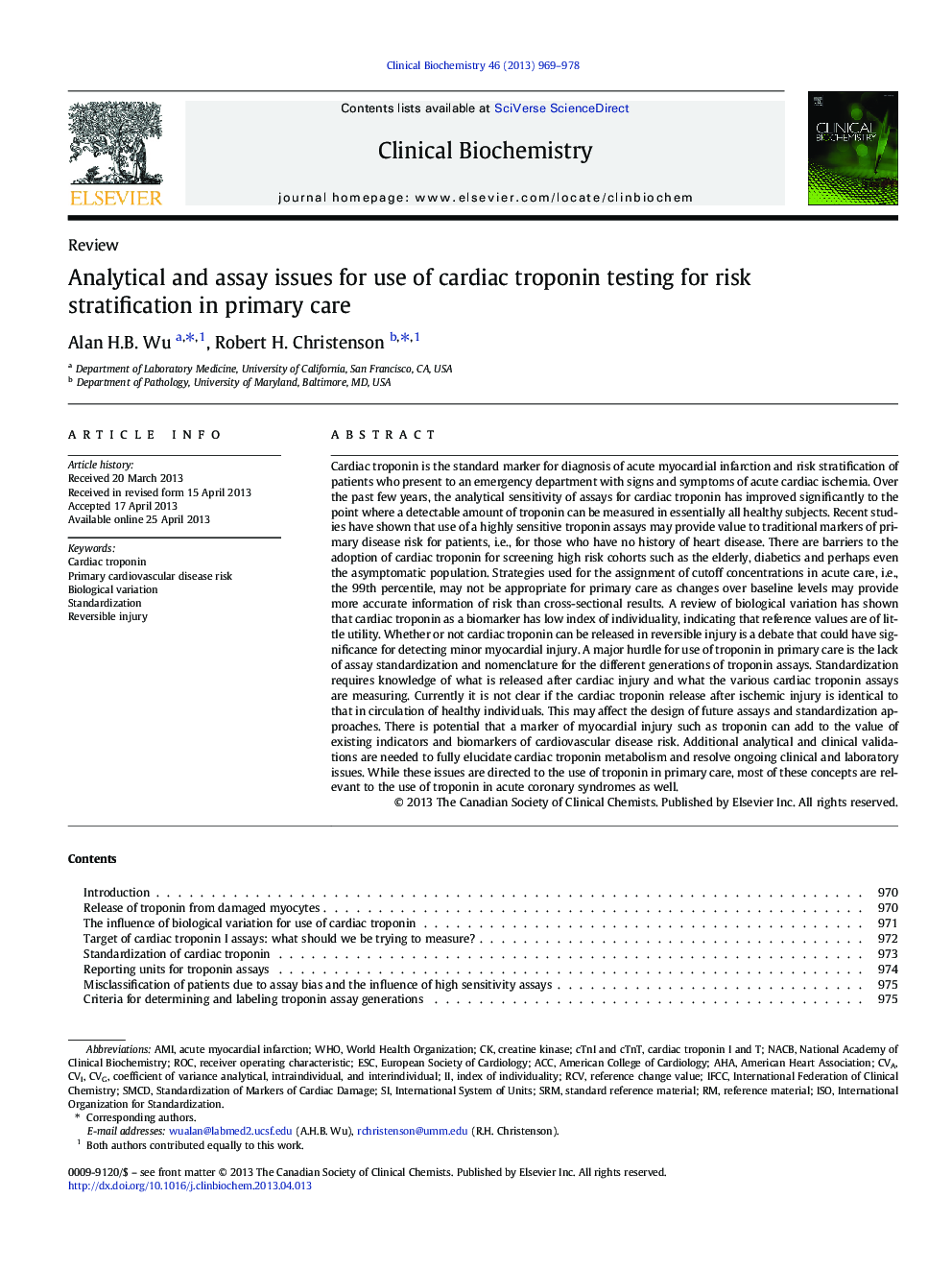| Article ID | Journal | Published Year | Pages | File Type |
|---|---|---|---|---|
| 10817975 | Clinical Biochemistry | 2013 | 10 Pages |
Abstract
Cardiac troponin is the standard marker for diagnosis of acute myocardial infarction and risk stratification of patients who present to an emergency department with signs and symptoms of acute cardiac ischemia. Over the past few years, the analytical sensitivity of assays for cardiac troponin has improved significantly to the point where a detectable amount of troponin can be measured in essentially all healthy subjects. Recent studies have shown that use of a highly sensitive troponin assays may provide value to traditional markers of primary disease risk for patients, i.e., for those who have no history of heart disease. There are barriers to the adoption of cardiac troponin for screening high risk cohorts such as the elderly, diabetics and perhaps even the asymptomatic population. Strategies used for the assignment of cutoff concentrations in acute care, i.e., the 99th percentile, may not be appropriate for primary care as changes over baseline levels may provide more accurate information of risk than cross-sectional results. A review of biological variation has shown that cardiac troponin as a biomarker has low index of individuality, indicating that reference values are of little utility. Whether or not cardiac troponin can be released in reversible injury is a debate that could have significance for detecting minor myocardial injury. A major hurdle for use of troponin in primary care is the lack of assay standardization and nomenclature for the different generations of troponin assays. Standardization requires knowledge of what is released after cardiac injury and what the various cardiac troponin assays are measuring. Currently it is not clear if the cardiac troponin release after ischemic injury is identical to that in circulation of healthy individuals. This may affect the design of future assays and standardization approaches. There is potential that a marker of myocardial injury such as troponin can add to the value of existing indicators and biomarkers of cardiovascular disease risk. Additional analytical and clinical validations are needed to fully elucidate cardiac troponin metabolism and resolve ongoing clinical and laboratory issues. While these issues are directed to the use of troponin in primary care, most of these concepts are relevant to the use of troponin in acute coronary syndromes as well.
Keywords
SRMACCNacbSMCDRCVIFCCROCAHAAmINational Academy of Clinical BiochemistryStandardizationEuropean Society of CardiologyAmerican Heart AssociationISOCardiac troponinBiological variationESCWorld Health OrganizationInternational Organization for StandardizationAcute myocardial infarctionInternational System of UnitsIndex of individualityInternational Federation of Clinical Chemistrystandard reference materialReference change valueReference materialAmerican College of CardiologyCreatine kinaseWHOreceiver operating characteristic
Related Topics
Life Sciences
Biochemistry, Genetics and Molecular Biology
Biochemistry
Authors
Alan H.B. Wu, Robert H. Christenson,
